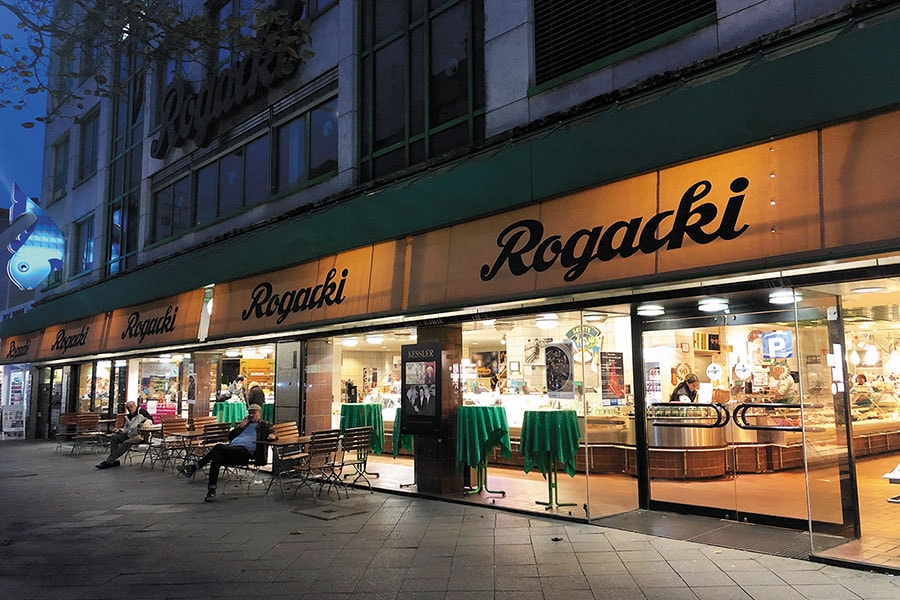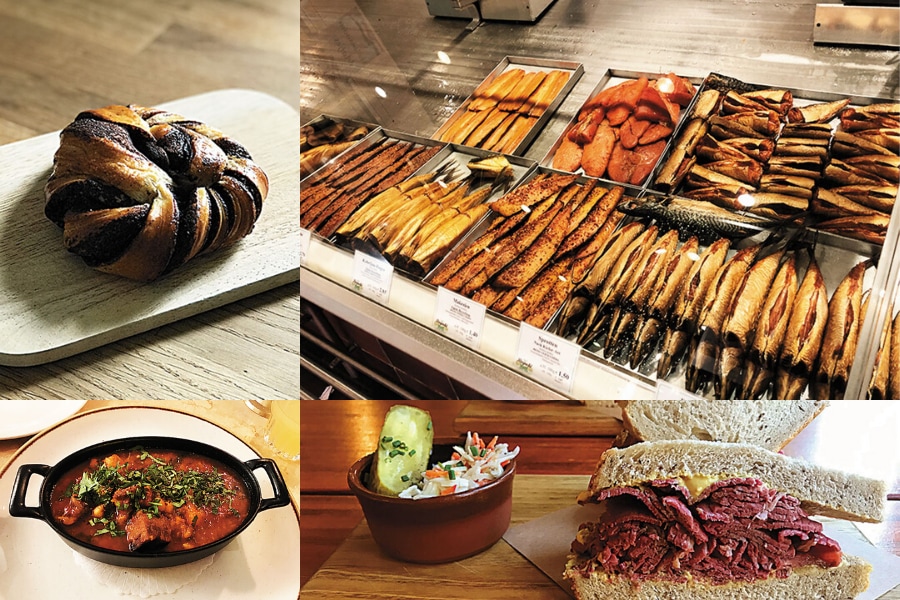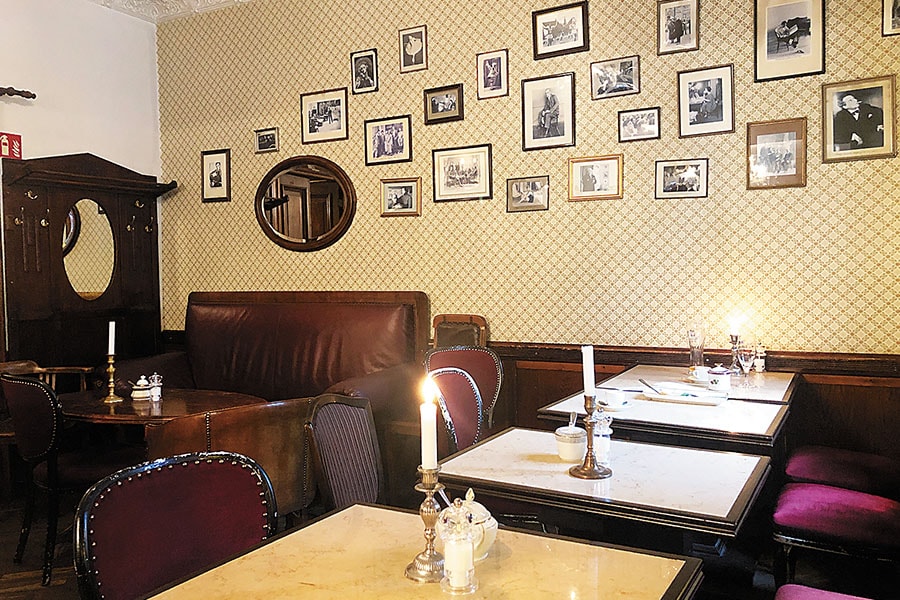
Exploring the best of Berlin's growing Jewish food scene
The German city, which has always attracted youngsters from around the world, is seeing a rise in popularity among people from Israel, contributing to Levantine food's trendiness in the region
.jpg) Rogacki first opened its doors in 1928. It has many delicacies that overlap with Jewish cuisine
Rogacki first opened its doors in 1928. It has many delicacies that overlap with Jewish cuisineSome of my earliest food memories are of cravings for things that I hadn’t even tasted. Archie comics made me crave whole glazed hams, eaten in one go, Jughead Jones-style. Enid Blyton made me yearn for root beer, potted meat, and sausages bursting in their skins. And eventually, American sitcoms, especially Seinfeld, caused my appetite to grow further. If it wasn’t the crab bisque served by the despotic chef they called ‘The Soup Nazi’, it was the latkes that Mr Costanza whipped up. And then there was the chocolate babka—that glorious baked treat that they dedicated an entire episode to. To say that the show, and the babka, piqued my interest in Jewish cuisine is an understatement.
It was a windy September day in Berlin when I alighted at the Warschauer Strasse train station and made my way towards one of the city’s more popular English-language bookstores, Shakespeare and Sons. While I love bookstores, this trip wasn’t entirely inspired by my love for the written word. A large sign board outside the store read ‘Books and Bagels’, and my curiosity was centred on the latter. In 2013, Laurel Kratochvila, who owns Shakespeare and Sons with her husband Roman, was absolutely disgusted by what Berliners were doing to the bagel—they weren’t just inauthentic, they were terrible. But since she came from a family of bakers, had trained at Le Cordon Bleu in France, and also had an inherent love for the bagel, Kratochvila decided to do something about it. So she annexed a small portion of the cash counter, and started serving up proper New York-style, hand-rolled, boiled-then-baked bagels. Bagels that have since gained the reputation of being the very best that Berlin has to offer. I scanned the exhaustive list of bagels and ‘schmear’ on offer, and settled on a plain bagel with cream cheese, and an onion bagel. Then I spotted the words I’d been hoping to see: Chocolate babka.

Half an hour later I was at home, waiting for a pot of coffee to brew, with the hallowed babka resting on a breakfast board and the bagels already lighter by a couple of bites. After having the cup of coffee, I settled down with the babka. It had the texture of bread or a brioche, but tasted in parts like a dense chocolate cake. Each chewy mouthful lasted a while, and it managed to be rich without feeling too decadent. At the time of writing this article, several bagels and babkas and some challah and rugelach later, I understand why Fine Bagels has become the go-to place for Jewish baked goods in Berlin.
To continue my quest for the best Jewish food in the city, I turned to Liv Fleischhacker, 31, the Berlin-based author of Mazel Tov, a guide to modern Jewish cooking around the world. She and Kratochvila also organised ‘Nosh’ (the Yiddish word for snack), Berlin’s only Jewish food festival. After organising two editions of the festival, they are hoping to get funding for a third. Growing up in Berlin, the grand-daughter of Holocaust survivors, Fleischhacker tells me that she was always aware of her Jewish heritage. Her grandfather even served as a zeitzeuge (‘time witness’), someone who has lived through certain historical events and is thus qualified to make people aware about that particular period of time.
“So, being Jewish was always a thing. We talked about it over family meals, but my grandparents didn’t cook Jewish food. They didn’t cook very much, actually. And there were no Jewish restaurants and delis in Berlin in the early ’90s for obvious reasons,” Fleischhacker says. It was only when she began her career as a food writer that she began thinking of her own identity, asking herself, “What is my own food culture?” The answers she sought led her on a journey that included honey-spiced cake usually eaten for Passover, warm pastrami with mustard, matzo ball soup, gefilte fish, and much more.
Not long after my conversation with Fleischhacker, I make my way to Mogg, a deli housed in an old red-brick building that was once a Jewish Girls school on Auguststrasse in Mitte. With simple long tables and benches and a cafeteria-style counter, there’s a rather no-nonsense Berlin feel to Mogg. But from the moment I walk in, something smells very, very good. I barely need to look at the menu, because I know exactly what it is that I’m there to eat: Their famous pastrami—that, I’m told, is brined and smoked in-house—on rye.
(This story appears in the 30 November, -0001 issue of Forbes India. To visit our Archives, click here.)



 Clockwise from top left: chocolate babka from Fine Bagels, assorted smoked fish from Rogacki, The Mogg pastrami on rye and lamb stew with chickpeas
Clockwise from top left: chocolate babka from Fine Bagels, assorted smoked fish from Rogacki, The Mogg pastrami on rye and lamb stew with chickpeas Pasternak serves Russo-Jewish food
Pasternak serves Russo-Jewish food



